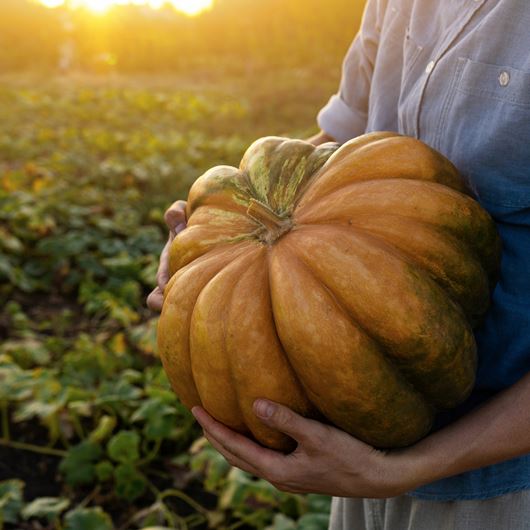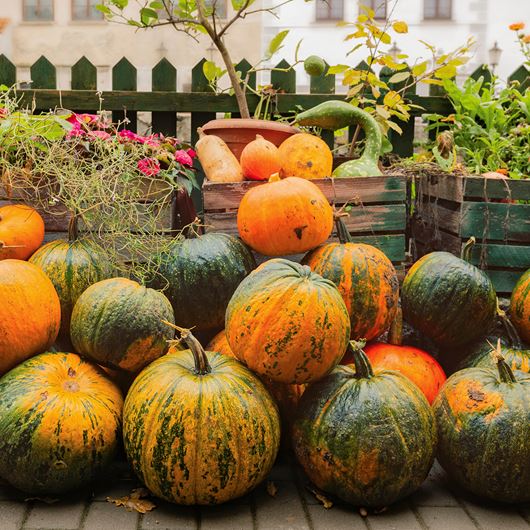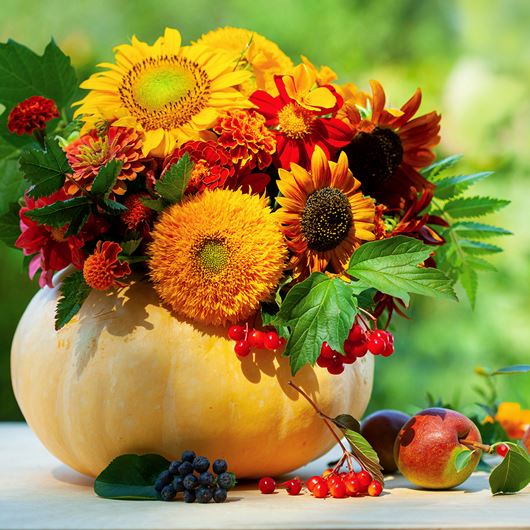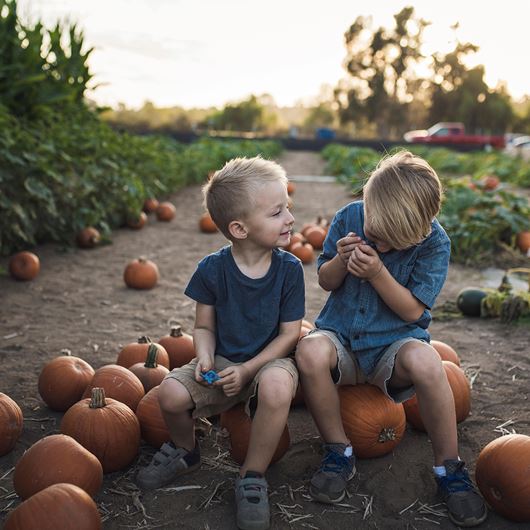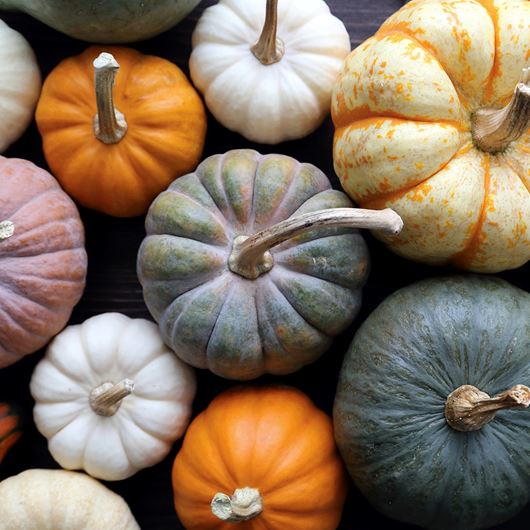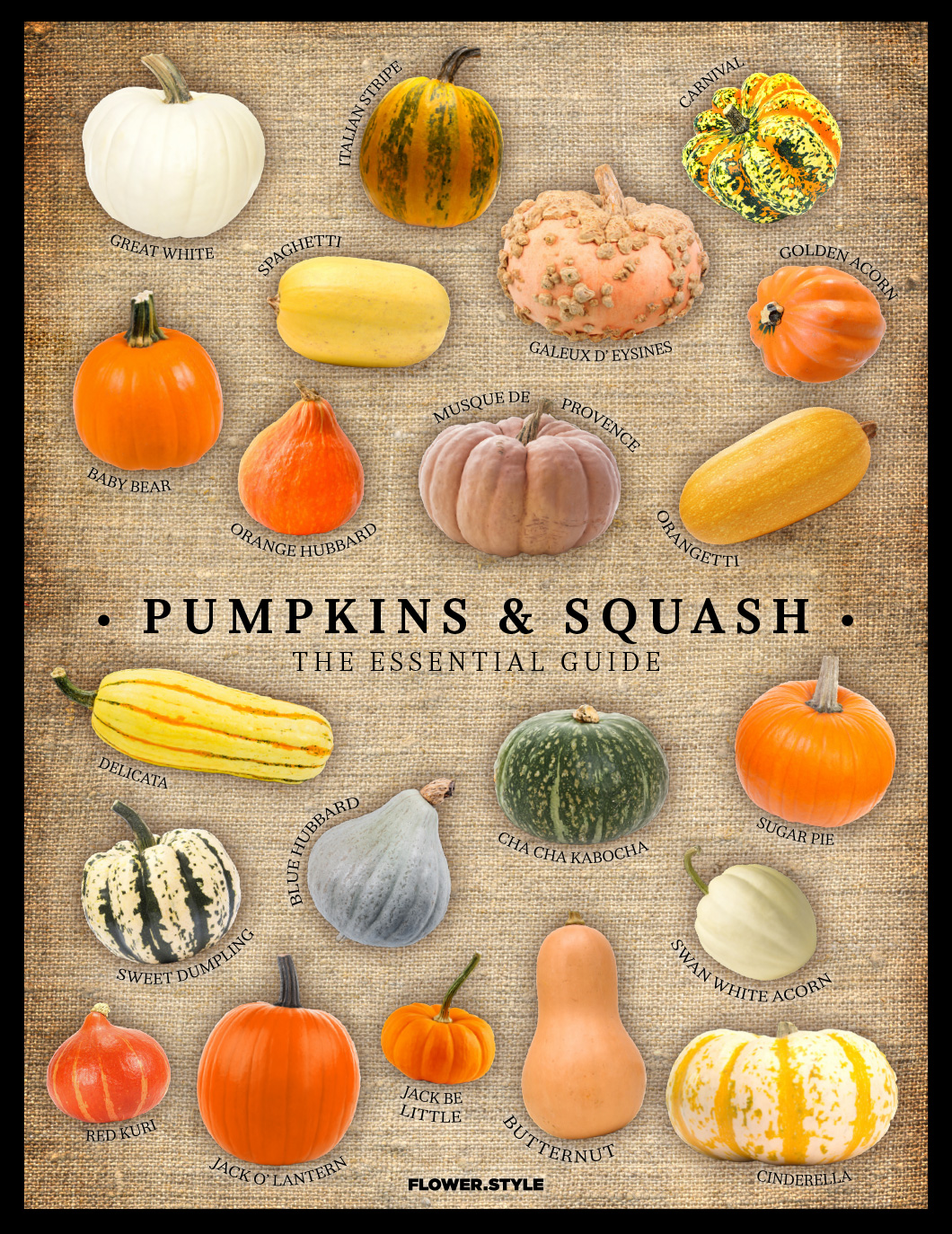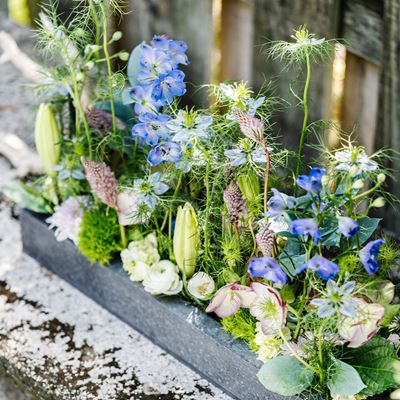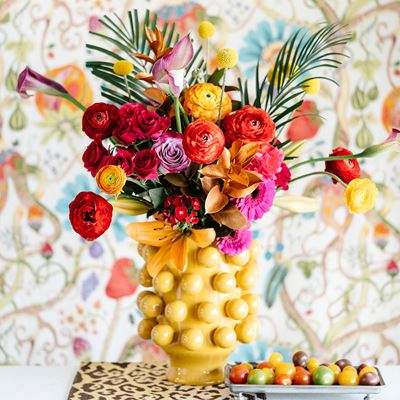Completing our 2023 lookbook series, our sixth and final trend, ATMOSPHERIC, pays homage to our planet's habitats at large. This trending macro view gathers an immersive palette of cool hues, borrowed from the oceans and forests, and pairs it with glowing bright white.
Organic Container, Quintessential Styling Accessory and Our Printable Poster for You—Edible Squash and Pumpkins are Fall Floral’s Best Friends
Nothing epitomizes the autumn harvest quite like winter squash. One of the oldest known crops in cultivation, this hearty and nutrient-packed foodstuff has been a central element of ancient diets across the Americas for thousands of years. Today, however, squash is just as prized for its good looks as it is for its delicious taste.
Before we move any further, let's quickly review some terminology. The word "squash" is used to refer to members of the Curburbita genus that are primarily eaten. These are found in two main types: summer and winter squash. Summer squash have tender skins and are typically harvested in warmer months (ex. zucchini), while winter squash have a dense shell that covers edible flesh and seeds (ex. butternut and pumpkins). And yes, pumpkins are squash. As a rule of thumb, all pumpkins are squash, but not all squash are pumpkins.
Given their durability, winter squash are better suited for longer storage, making them ideal for cool season recipes and decorating projects. Nonetheless, not all winter squash are made equal—especially when it comes to taste. Common grocery store varieties, including butternut and acorn, make excellent ingredients in fall season menus. These are often mild to sweet in flavor. Other types, specifically pumpkins, are better left for Halloween carving or home decor because they are more ornamental than they are tasty.
Scroll on for a closer look at some of our favorite winter squash varieties displayed on a downloadable digital poster here, for you with our compliments.
CARVING TIPS & TRICKS. Pumpkins and other winter squash make excellent containers for holiday props and seasonal recipes. Perfect for Jack-o'-lanterns and floral pumpkin pots to acorn squash bowls, follow these easy steps to carve your squash like a pro.
1. Pick a good squash. Choose a sturdy squash that is free of bruises. For pumpkins, select one that still has its stem attached. A firm stem is an indicator of good health.
2. Protect your carving surface. Use newspaper, kraft or a disposable table covering to allow for an easy cleanup later.
3. Make the first cut. For Halloween-type pumpkins (used for Jack-o'-lanterns), use a thin, serrated knife to cut out a medium-sized hole from the bottom instead of the top of the pumpkin. Leaving the stem attached will help the pumpkin last longer. Also, do not throw out the portion you just cut off; you'll need this for later.
4. Scoop out the "guts." Using a large metal scoop, remove the pulp until the interior is completely clean. Pro tip: don't throw out the seeds! These can be saved and roasted for a quick and healthy snack.
5. Preserve your pumpkin. For Jack-o'-lanterns only, you can wipe the interior walls with a mixture of water and bleach. This will prevent rot and keep pesky creatures away. Spreading petroleum jelly on the cut edges of pumpkins can also seal in moisture and help carved designs last longer.
FUN FACTS.
• Squash is one of the oldest known crops in history, dating back over 10,000 years to North America. In fact, the oldest pumpkin seeds have been found in Mexico and date back to somewhere between 7,000 to 5,550 B.C..
• The word squash is derived from a New England Native American term "askutasquash," meaning vegetables consumed while green. This likely was a reference to a summer squash.
• Pumpkins were named by French explorer, Jacques Cartier, in 1584. He called them "gros melons," which translated to "pompions" in early English. This has since evolved to the modern "pumpkin" used today.
• The written word "pumpkin" appeared for the first time in the fairytale, Cinderella.
• According to the USDA National Agricultural Statistics Service, over 1.5 billion pounds of pumpkins are produced in the U.S. annually. About 80 percent of this yield is ripe for the picking in one single month of the year—October.
• The top pumpkin-producing states in the U.S. are Illinois, Indiana, Ohio, Pennsylvania and California.
• Winter squash and pumpkins hold an important place in folklore and cultural symbolism, especially in the U.S. In early colonial times, settlers in New England used pumpkins as containers to make the first known version of pumpkin pie. They also used pumpkin materials in their recipes, including beer, breads, pudding and several others.
• The tradition of carving Jack-o'-lanterns originated in Ireland, where large root vegetables served as early vessels. The name, Jack-o'-lantern, comes from an Irish folktale about a man named Stingy Jack. Because of the story, people in Ireland and Scotland would carve scary faces onto turnips, potatoes, and beets to keep evil spirits away during the Celtic holiday, Samhain. This is the night when spirits of the dead would walk the earth.
• The American tradition of carving Jack-o'-lanterns would start in 1836, when Irish immigrants who moved to the U.S. (the home of the pumpkin) brought the custom with them. Here, pumpkins were used instead of root vegetables since they were more readily available.
